#Peak Climbing in Nepal
Explore tagged Tumblr posts
Text
How long does it take to climb Manaslu?
The eighth-highest peak in the world, Manaslu, is a spectacular climb. Standing at a height of 8,163 meters (26,781 ft), it is situated in Nepal. You may be wondering how long it takes to reach the top if you're considering taking on this adventure. Now let's dissect it!

Preparation: Training and Planning
It's important to prepare before you ever set foot on the mountain. The majority of climbers train their bodies and minds for several months. Typically, this comprises:
Physical Training: Building strength, endurance, and flexibility.
Mental Preparation: Developing the mental toughness to handle extreme conditions.
Logistics: Organizing permits, gear, and a reliable guiding service.
Journey to Base Camp
Travel to Kathmandu, the capital of Nepal, is the first leg of the trek to Manaslu Base Camp. You will next drive to the trailhead, which is usually in Soti Khola or Arughat. This is a six to seven-hour drive. After that, you'll journey through stunning communities and scenery for roughly six to ten days. Acclimatization, or assisting your body in adjusting to the altitude, is facilitated by this walk.
Acclimatization and Climbing
Once at Base Camp, the real adventure begins. Here's a rough timeline:
Week 1: Base Camp and Acclimatization
Days 1-3: Setting up Base Camp and resting.
Days 4-7: Acclimatization hikes to higher altitudes and returning to Base Camp.
Weeks 2-3: Climbing Rotations
Days 8-14: Climbing to higher camps (Camp 1, Camp 2, Camp 3) and returning to Base Camp for rest. This helps your body get used to the thin air.
Days 15-21: More rotations between camps, gradually moving higher each time.
Week 4: Summit Push
Days 22-28: Weather permitting, you make your summit push. This involves:
Climbing from Base Camp to Camp 1, then Camp 2, Camp 3, and finally Camp 4.
From Camp 4, you'll start your summit attempt, often in the early hours before dawn. The climb from Camp 4 to the summit and back to a lower camp can take about 12-18 hours.
Descent and Return
Although the descent is faster after reaching the summit, caution is still necessary. Usually, returning to Base Camp takes three to four days. After spending another five to seven days trekking from Base Camp to the trailhead, one can drive back to Kathmandu.
Total Time
In total, the entire expedition from Kathmandu and back usually takes around 6-8 weeks. This includes time for acclimatization, climbing rotations, and weather delays.
Personal Experience
The experience of climbing Manaslu was both thrilling and draining. There were breathtaking vistas and hospitable residents along the route to Base Camp. Although difficult, the acclimatization climbs were necessary to help the body adjust to the high altitude. The most difficult part was pushing to the summit while dealing with bitter cold and strong gusts. It was all worthwhile, though, as you stood atop the peak and gazed down at the world below.
Final Thoughts
Manaslu climbing is a challenging but worthwhile experience. It calls for endurance, patience, and careful planning. Manaslu presents a special challenge that will make you cherish your time spent there, regardless of your level of experience as a mountaineer or your level of desire for exploration.
2 notes
·
View notes
Text
Langtang Region Trekking
Nestled in the heart of the Himalayas, the Langtang Region in Nepal is a hidden gem waiting to be discovered by trekkers and nature enthusiasts. This relatively less-visited region offers breathtaking landscapes, rich cultural experiences, and a chance to escape the crowds that flock to more popular trekking destinations like Everest and Annapurna. In this article, we will take you on a journey…

View On WordPress
3 notes
·
View notes
Text
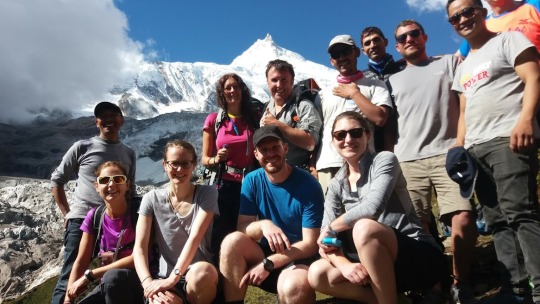
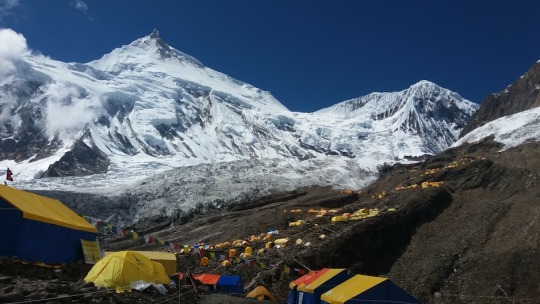
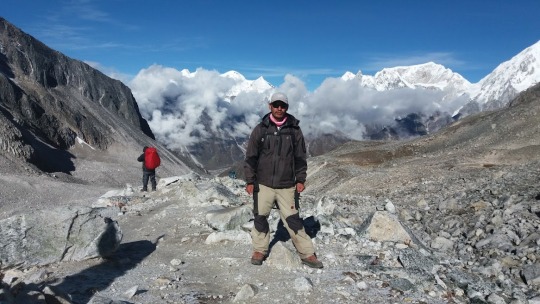
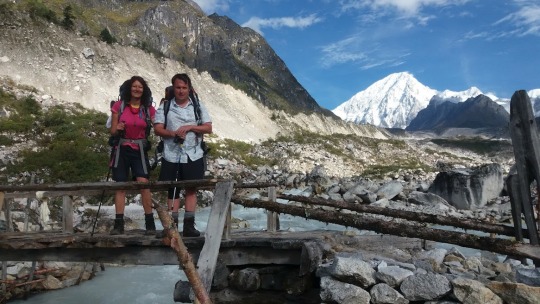
Pictures collections from Nepal Trekking. Trekking in Nepal is to experience nature and culture which is naturally gifted to Nepal. Nepal is a beautiful and wonderfully gorgeous nation situated in Southeast Asia between China and India.
#nepal#travel#highpassadventure#adventure#everest#annapurna#trekking in nepal#travel and tourism#treks#nepaltrekking#travel to nepal#nepaltravel#visit nepal#visitors#climbing#peak climbing#peak climbing in nepal#exploring#walking#hike#mountaineering#kayaking
5 notes
·
View notes
Text
Top 5 Mountaineering Peaks in Nepal.
Nepal is known as the land of the Himalayas Nepal is a paradise for mountaineering lovers. It has some of the sky-scraping peaks of the World such as the highest peak of the World Mt. Everest. Here, you can have some diverse peaks to give you different challenges and experiences. From skyscraping Everest to the technical climbs of Makalu, Nepal is home to mountaineering peaks for everyone from the novice to the experienced adventure climber.
So, in this blog, you will read about the best 5 mountaineering peaks in Nepal:
1. Mera peak:

Mera Peak, standing at 6,461 meters, is the most popular peak for climbing in Nepal. Located in the eastern part of the country within the Makalu-Barun National Park and Conservation Area, it offers an ideal adventure for first-time trekkers seeking an adrenaline rush without requiring advanced technical expertise. Once you reach the summit, you'll be rewarded with breathtaking views of some of the tallest mountains in the world, including Mt. Everest, Makalu, Kanchenjunga, and Lhotse.
The climbing route of Mera Peak consist of various landscapes and astonishing views of great mountains and walking through glaciated region. Chukung is the starting point for the trek to this trekking peak. Afterward, head toward the path of Hinku Valley. After that, we will trek to Khare at the altitude of 5090 m. We will reach Mera La pass. Then, we'll visit the Base Camp of Mera Peak after Mera La. Furthermore, the route expands until Camp 1 (6100 m) and then the last summit of Mera Peak. This trek takes approximately 15 days to complete.
Highlights of Mera Peak
Experience diverse landscapes, from alpine meadows to high-altitude deserts.
Explore the Sherpa Village, learn about their culture & traditions, and interact with the locals.
Breathtaking vistas of the highest peaks such as Mt Everest, Makalu, Lhotse, Kanchenjunga, and Cho Oyu.
Experience a peaceful and less crowded trail.
Offers a great introduction to mountaineering without broad preparation.
2. Island Peak

Island Peak is the most accessible mountaineering peak in the Everest region. This peak offers a challenging yet achievable climbing experience. Island Peak, also known as Imja Tse, reaches an elevation of 6170 m. The hike to Island Peak generally takes 16-20 days. More so, Edmund Hillary, and Tenzing Sherpa, the world's greatest climber, trained through this peak and discovered the path that to this date remains in use.
There are some technical parts of Island Peak, but with proper training and guidance, it would be a great option for people who are in good physical shape. For climbing to the Island Peak, the base camp starting point for the peak is at an altitude of 5087 meters above sea level. Climbing up to High Camp at 5600 meters reduces most of the effort and time on summit day.
Highlights of Island Peak
The mesmerizing view of Everest, Changtse, Lhotse, Nuptse, and many more.
Tengboche is the biggest monastery in the Everest Region.
Khumbu Icefall and Glaciers.
Passing through beautiful valleys and Sherpa Villages.
Discover unique flora and wildlife on the trail.
3. Lobuche Peak:

This trek would take around 17 days usually to complete This peak can be taken with those who may want to challenge and reap all the rewards with a Himalayan climb without vast technical climbing. The trekking peak in Nepal will present to you the gift of the breathtaking views of Lhotse, Ama Dablam, Nuptse, and many more. As a training site, The Lobuche East Peak is renowned among would-be mountaineers. Climbers could conquer this mountain faster than many other mountains within just about 3-4 days.
Highlights of Lobuche Peak
Hike to Everest Base Camp trek
Breathtaking vistas of Mt Everest from the Lobuche Peak.
Pass by the Khumbu Glacier, the world’s highest glacier.
Explore the unique Sherpa settlements and their culture.
Trek through prayer flags and monasteries via suspension bridges and through thick woods.
4. Pisang Peak:
Pisang Peak lies between Annapurna I and Manaslu in the Manang district. Since this is not one of the challenging peaks, the 6091-meter Pisang peak is one of the easiest climbing peaks in Nepal. The peak provides the best travel to different ecology, panorama, and culture. The round trip from Pisang takes almost 18 days.
As you gain altitude, you can enjoy the fantastic views of the Annapurna massif and other Himalayan peaks. The route from this trek has a well-defined trail to the Annapurna Circuit. Generally, the spring and autumn seasons are known to be ideal to climb Pisang Peak. Climatic conditions remain fair in these periods along with bright weather and reasonable temperature.
Highlights of Pisang Peak
Exploration of Lower Mustang and Marshyangdi Valley.
Hike through the colourful rhododendron and bamboo forest.
Visit Thorong La Pass, the highest pass in the world.
The adventurous trek around Annapurna massif.
Explore the fantastic steep mountainside, Swarga Dwari, and Gates to Heaven.
5. Yala Peak:

At an altitude of 5,500 meters, it is ideal for first-time climbers with average fitness. The technicalities to be used are also minimal hence a good starting point for attempting mountain climbers. The tour to Yala takes about 13 days.
From Gompa, it is possible to reach this mountaineering peak in three days by taking the High Base Camp route. The trek is easy and scenic, and you will learn much from the climb. Panoramic views from the summit include Langtang Lirung (7,246m), Dorje Lakpa (6,990m), Gangchempo (6,388m), and Sishapangma (8,027m).
Highlights of Yala Peak
Stunning hike to Langtang village through the dense forest.
Tamang individuals and their rich cultures are other things to see.
You can explore the Chortens and Mani walls on the trekking course to Kyanjin Gompa.
It is less touristy and less crowded than other trails in Nepal.
Marvellous view of Langtang Lirung (7,246 m) and Ganesh Himal from Kyanjin Ri and Yala peak top.
Conclusion
Whether you are an experienced mountaineer or an aspiring climber, Nepal has the most unbelievable landscapes, incredible culture, and friendly locals. You will never forget visiting this country. When you begin your Himalayan adventure, respect these mountains, their environment, and the people who call these mountains home. Your adventure partner, Happy Mountain Nepal will make your trip enjoyable and hassle-free.
FAQs
What are the best seasons for climbing peaks in Nepal?
The best season for climbing g peaks is Spring (March-May) and autumn (September-November).
Do I need prior climbing experience for these peaks?
Not every peaks need prior experience such as Mera Peak and Yala Peak are easy and best for beginner.
What permits are required for mountaineering in Nepal?
Permits like Trekker's Information Management System (TIMS) card, and other essentials national park permit are required.
How physically demanding are these treks?
Physical fitness differs as per the peak levels, but good physical condition is needed for all climbs.
What is the average cost of climbing these peaks?
The avarage cost of climibing these peaks depend on the peak, guide services, permits, and other logistics.
#trekking in nepal#Peak Climbing in Nepal#Island Peak Climbing#Lobuche Peak Climbing#Mera Peak Climbing
0 notes
Text
How to Prepare for Everest Three High Passes Trekking, Peak Climbing in Nepal and Manaslu Circuit Trekking
Nepal is a paradise for adventure seekers, offering a variety of thrilling trekking and mountaineering experiences. Whether you are planning the Everest Three High Passes Trekking, aiming for Peak Climbing in Nepal, or embarking on the remote Manaslu Circuit Trekking, proper preparation is essential for a successful and enjoyable adventure. Here’s how to get ready for these challenging yet rewarding journeys.
1. Build Physical Endurance and Strength
All three expeditions require excellent physical fitness. Start training at least 3–6 months before your trip with:
• Cardio exercises such as running, cycling, or swimming to improve endurance.
• Strength training for your legs, core, and upper body to handle steep ascents and descents.
• Hiking with a backpack to simulate real trekking conditions.
2. Acclimatization and Altitude Training
Since these adventures involve high altitudes, acclimatization is crucial:
• Everest Three High Passes Trekking crosses Kongma La (5,535m), Cho La (5,420m), and Renjo La (5,360m), making it one of Nepal’s most challenging treks.
• Peak Climbing in Nepal, such as Island Peak or Mera Peak, involves climbing above 6,000m, requiring gradual ascent and proper acclimatization.
• Manaslu Circuit Trekking reaches Larke Pass (5,106m), where altitude sickness can be a concern if rushed.
To minimize risks, follow a gradual ascent schedule, stay hydrated, and take rest days.
3. Learn Basic Mountaineering Skills
If your adventure includes Peak climbing in Nepal, basic mountaineering skills are necessary:
• Learn to use crampons, ice axes, and ropes.
• Familiarize yourself with glacier walking and climbing techniques.
• Consider taking a pre-climbing course or practicing with a guide before your expedition.
4. Pack the Right Gear
For all three adventures, pack wisely:
• Clothing: Layered clothing, waterproof gear, insulated gloves, and a down jacket.
• Footwear: High-quality trekking boots and climbing boots (for peak climbing).
• Essential Gear: Sleeping bag, trekking poles, headlamp, and a first-aid kit.
5. Choose the Right Trekking Company
To ensure safety and a well-organized trip, book your Everest Three High Passes Trekking, Peak Climbing in Nepal, or Manaslu Circuit Trekking with a reputable trekking company that provides experienced guides, proper acclimatization, and logistical support.
With the right preparation, you can enjoy the breathtaking beauty and challenges of Nepal’s Himalayan adventures!
0 notes
Text

kairani pinkett lesha
#adoration#beautiful model#gorgeous#intimacy#lovers#passion and desire#ps2 nostalgia#sexy bitch#sexy pose#bahajolaf#nepal travel#nepali girl#trekking in nepal#nepal#nepal trip#nepal tour#spiritualknowledge आध्यात्मिक ज्ञानvisit 📲 “satlok ashram” youtube channel saint rampal ji maharaj 👇watch nepal tv 6:00am daily!#mbbs in nepal#nepal holiday package#peak climbing in nepal
0 notes
Text
Summiting Serenity: The Mera Peak Challenge
Climbing Mera Peak isn't just about reaching the top; it's a journey through some of Nepal's most untouched landscapes. This peak, often considered a trekking peak, still demands respect with its high altitude, but the reward is unparalleled. Imagine pushing through the thin air, each step a mix of effort and exhilaration, until you stand at 6,476 meters, above a sea of clouds with Everest peeking in the distance. It's not just the climb that captivates; it's the days spent in remote valleys, the nights under starlit skies, and the bond formed with your climbing team. Mera Peak offers a taste of mountaineering with less technical difficulty, making it a dream for those looking to step into the world of high-altitude climbing with a sense of adventure that's deeply personal and profoundly rewarding.
0 notes
Text
Ama Dablam Expedition: Conquering the Jewel of the Himalayas
The Himalayas have always been a magnet for adventurers, and among its towering giants, Ama Dablam stands out as one of the most iconic peaks. Known as the "Matterhorn of the Himalayas," Ama Dablam is a majestic 6,812-meter (22,349-foot) mountain located in the Khumbu region of Nepal. Its striking pyramid shape and stunning ice-covered summit make it a coveted destination for mountaineers and trekkers alike.
A Brief Overview of Ama Dablam
Ama Dablam, which means "Mother's Necklace" in Sherpa, derives its name from the two prominent features that define its profile: the central summit, which resembles a mother's necklace, and the surrounding ridges that resemble the flaps of a traditional Sherpa woman's clothing. The peak was first summited in 1961 by a New Zealand and American team, and since then, it has become a popular objective for climbers aiming to tackle one of the most beautiful and challenging mountains in the world.
Preparing for the Expedition
Climbing Ama Dablam requires thorough preparation, both physically and logistically. The expedition typically involves a combination of trekking and technical climbing. Here are some key aspects to consider when planning an Ama Dablam expedition:
Physical Fitness: Ama Dablam is a technical climb, requiring climbers to have a high level of physical fitness and prior climbing experience. Training should focus on building endurance, strength, and technical climbing skills.
Permits and Logistics: The expedition requires several permits, including a climbing permit from the Nepal Mountaineering Association and a trekking permit for the Sagarmatha National Park. Arranging these permits, as well as organizing logistics such as guides, porters, and accommodations, is crucial for a smooth expedition.
Acclimatization: Proper acclimatization is essential for high-altitude climbing. The expedition usually includes several days of trekking to the base camp and acclimatization climbs to help climbers adjust to the altitude.
Gear: Specialized climbing gear is necessary for Ama Dablam, including crampons, ice axes, climbing ropes, harnesses, and high-altitude clothing. Ensuring that all gear is in good condition and suitable for the conditions is vital for safety.
The Route and Climbing Challenges
The standard route to the summit of Ama Dablam is the Southwest Ridge, which presents a variety of technical challenges:
Base Camp: The journey typically begins with a trek from Lukla to Ama Dablam Base Camp, which takes about 8-10 days. Base Camp is situated at an altitude of approximately 4,600 meters (15,091 feet) and serves as the starting point for the climb.
Camp I and II: From Base Camp, climbers ascend to Camp I at around 5,700 meters (18,700 feet) and then to Camp II at approximately 6,200 meters (20,300 feet). These camps are strategically placed to allow climbers to acclimate and rest before tackling the summit.
The Summit Push: The final ascent involves negotiating a series of technical sections, including steep ice and rock faces. Climbers must be prepared for high winds and freezing temperatures. The final push to the summit is often made during a short weather window to minimize exposure to the harsh conditions.
The Rewards
Despite its challenges, the reward of summiting Ama Dablam is unparalleled. From the summit, climbers are treated to breathtaking views of some of the world's highest peaks, including Everest, Lhotse, and Makalu. The sense of accomplishment and the stunning scenery make the arduous journey worthwhile.
Conclusion
An Ama Dablam expedition is a dream for many mountaineers, offering a combination of technical climbing, breathtaking beauty, and cultural immersion in the heart of the Himalayas. With careful preparation, the right equipment, and a spirit of adventure, reaching the summit of this iconic peak can be a life-changing experience. Whether you're an experienced climber or a passionate trekker, Ama Dablam promises an unforgettable adventure amidst the towering giants of Nepal.
0 notes
Text
Peak Climbing In Nepal!

Experience the thrill of peak climbing in Nepal, with stunning Himalayan vistas, diverse routes, and challenges for all levels. Ideal for seasoned mountaineers and enthusiastic trekkers seeking unforgettable challenges. Himalaya Heart Treks and Expedition offers a thrilling adventurous with majestic Himalayan views. Popular peaks like Island Peak, Mera Peak, and Lobuche East provide diverse challenges for climbers. With our expert guides and experienced team, we provide safe and well-organized peak climbs that cater to both novice and experienced climbers. Read More: https://www.himalayaheart.com/activity/peak-climbing
0 notes
Text
Exploring Nepal's Diverse Trekking and Climbing Opportunities
Nepal, renowned for its towering peaks and rich cultural heritage, offers a myriad of trekking and climbing adventures that attract outdoor enthusiasts from around the globe. Among the diverse options available, the Upper Mustang trek, peak climbing in Nepal, and the Mardi Himal Trek stand out as distinctive experiences, each offering its own blend of natural beauty and cultural immersion.
Upper Mustang Trek:
Nestled in the rain shadow of the Annapurna and Dhaulagiri ranges, the Upper Mustang trek region presents a unique trekking experience reminiscent of Tibet. This restricted area trek takes you through arid landscapes adorned with ancient caves, monasteries, and traditional Tibetan Buddhist villages. Starting from Jomsom, trekkers traverse barren hillsides adorned with prayer flags and encounter the iconic walled city of Lo Manthang. The trek not only offers spectacular views of Nilgiri, Annapurna, and other Himalayan peaks but also provides insights into the preserved Tibetan culture and way of life.

Peak Climbing in Nepal:
For those seeking greater challenges and adrenaline-pumping adventures, Nepal's peaks offer ample opportunities for peak climbing. From popular peaks like Island Peak (Imja Tse) to more technical ascents like Lobuche East, Nepal caters to climbers of all levels. peak climbing in Nepal combines physical exertion with awe-inspiring scenery, allowing climbers to experience the thrill of conquering high-altitude summits while surrounded by the majesty of the Himalayas. Proper acclimatization, technical skills, and experienced guides are essential for a safe and rewarding climbing experience in Nepal.

Mardi Himal Trek:
Located just east of the Annapurna Base Camp route, the Mardi Himal Trek is a relatively new and less crowded trail that offers stunning views of the Annapurna range. Beginning from the picturesque town of Pokhara, this trek winds through lush rhododendron forests, charming villages, and high-altitude landscapes. Trekkers are rewarded with panoramic vistas of Machapuchare (Fish Tail), Annapurna South, and Mardi Himal itself. The trek is ideal for those looking to immerse themselves in nature away from the crowds while enjoying the tranquility of the Himalayan wilderness.

Choosing Your Adventure:
Whether you're drawn to the cultural mystique of Upper Mustang, the adrenaline rush of peak climbing, or the serene beauty of the Mardi Himal Trek, Nepal offers something for every adventurer. Each experience promises not just physical challenges but also cultural insights and spiritual fulfillment amidst some of the world's most spectacular landscapes.
Conclusion:
Nepal's trekking and climbing opportunities are as diverse as they are exhilarating, attracting adventurers seeking both physical and spiritual fulfillment. Whether you're trekking through the ancient kingdom of Upper Mustang, conquering a Himalayan peak, or exploring the lesser-known trails like Mardi Himal, Nepal's rugged terrain and warm hospitality ensure an unforgettable journey. As you plan your next adventure in Nepal, prepare to be captivated by the natural beauty, cultural richness, and unparalleled Himalayan experiences that await you.
0 notes
Text
HimLung Expedition
The Himlung Expedition takes adventurers to the breathtaking heights of Himlung Himal, standing at 7,126 meters in the Nepal-Tibet border region. This expedition offers climbers a unique blend of technical challenges and stunning scenery, making it an attractive option for those looking to experience a lesser-known peak. The journey begins in Kathmandu, where climbers prepare and acclimatize before trekking through remote villages and pristine landscapes. Base Camp serves as the launch point for the ascent, which typically involves several high camps for acclimatization. Climbers face varying terrain, including glaciers and crevasses, requiring technical skills and teamwork. The reward for their efforts is not only reaching the summit but also enjoying panoramic views of the majestic Himalayas, including peaks like Manaslu and Kang Guru.
1 note
·
View note
Text
Annapurna Trekking Region
rekking in the Annapurna region of Nepal is one of the most popular and iconic trekking experiences in the world. The region offers a diverse range of trekking options, from relatively easy and short treks to challenging and longer expeditions. Here is an overview of trekking in the Annapurna region: 1. Trekking Routes: Annapurna Circuit Trek: This classic trek typically takes around 15-20 days…
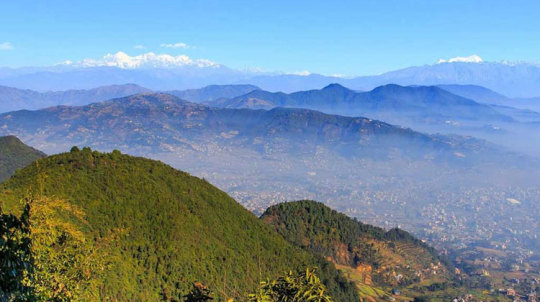
View On WordPress
2 notes
·
View notes
Text
Your Guide to the Best Trekking Company in Nepal for Peak Climbing
Nepal is famous for its stunning mountains and beautiful landscapes, making it a top destination for trekking and peak climbing. To ensure a safe and enjoyable adventure, it's essential to choose the best trekking company. Here's your guide to finding the best trekking company in Nepal for peak climbing.

Why Choosing the Right Trekking Company Matters
Selecting the right trekking company is crucial for several reasons:
Safety: Experienced guides and proper safety measures are essential for high-altitude climbing.
Expertise: Knowledgeable guides can make your journey smoother and more enjoyable.
Convenience: A good trekking company handles permits, logistics, and other details, so you can focus on the climb.
The Best Trekking Company in Nepal: Trek Me Nepal
1. Experienced Guides
Trek Me Nepal has a team of experienced and certified guides. They are experts in Nepal's trekking routes and peaks, ensuring your safety and enhancing your climbing experience.
2. Comprehensive Packages
The company offers a variety of peak climbing packages, catering to different skill levels and interests. Popular options include:
Island Peak Climbing: Ideal for beginners, offering stunning views of Everest.
Mera Peak Climbing: The highest trekking peak in Nepal, perfect for adventure seekers.
Ama Dablam Expedition: A challenging climb for experienced climbers.
3. Safety First
Safety is a priority for Trek Me Nepal. They provide thorough briefings, acclimatization schedules, and regular health check-ups. Their guides are trained in first aid and emergency procedures.
4. Positive Reviews
The company has received many positive reviews from climbers worldwide. Clients praise their professionalism, excellent service, and the unforgettable experiences they offer.
5. Sustainable Practices
Trek ME Nepal is committed to sustainable tourism. They follow eco-friendly practices and support local communities, helping to preserve Nepal's natural beauty and cultural heritage.
Tips for Choosing the Best Trekking Company
When selecting a trekking company, consider the following:
Check Reviews: Look for reviews and testimonials from previous clients.
Verify Certifications: Ensure the company and its guides are certified by relevant authorities.
Ask About Safety Measures: Inquire about their safety protocols and emergency procedures.
Compare Packages: Look at the different packages offered and choose one that fits your skill level and interests.
Consider Sustainability: Choose a company that practices sustainable tourism.
Preparing for Your Peak Climbing Adventure
Here are some tips to help you prepare for your climb:
Train Physically: Build your stamina and strength through regular exercise.
Acclimatize Properly: Give your body time to adjust to high altitudes.
Follow Your Guide: Listen to your guide’s advice and instructions.
Stay Hydrated and Eat Well: Proper nutrition and hydration are crucial at high altitudes.
Enjoy the Journey: Take in the beautiful landscapes and local culture along the way.
Conclusion
Choosing the best trekking company is essential for a successful peak climbing adventure in Nepal. Trek Me Nepal, with its experienced guides, comprehensive packages, and commitment to safety and sustainability, is a top choice. Plan your next climbing adventure with them for an unforgettable experience.
For more information and to book your peak climbing trip, visit the Trek Me Nepal website today!
0 notes
Text
Island Peak: A Test of Willpower for Experienced Climbers
Island Peak (6,189 meters), also known as Imja Tse, offers a demanding and rewarding climb in Nepal's Khumbu region, neighboring the mighty Everest. This pyramid-shaped peak attracts experienced climbers seeking a challenging ascent amidst breathtaking Himalayan scenery. The climb tests technical skills, physical fitness, and the ability to handle the unforgiving conditions of high altitudes.

Gateway to Adventure
The expedition typically begins in Kathmandu, Nepal's capital city. Here, climbers finalize logistics, assemble specialized gear for extreme conditions, and undergo crucial training to prepare their bodies for the thin air encountered at high altitude. Transportation then takes them to a starting point like Lukla, the gateway to Everest. The trek to Island Peak Base Camp (around 5,030 meters) commences, offering stunning views of surrounding peaks like Lhotse (8,516 meters) and Ama Dablam (6,812 meters).
Acclimatization and Technical Training
The initial stages involve trekking through the Khumbu Valley, a region adorned with traditional villages, prayer flags, and dramatic mountain vistas. This period is crucial for acclimatization, allowing climbers to gradually adjust to the increasing altitude while enjoying the rich culture of the region. Villages like Namche Bazaar and Tengboche offer rest stops and a chance to interact with the local people. As the trek progresses, the focus shifts towards technical aspects of the climb. Establishing Base Camp marks the beginning of technical training, with practice sessions on fixed ropes and crevasse rescue techniques.
The Ascents: A Blend of Skill and Grit
The climb from Base Camp involves traversing glaciers with crevasses and navigating the challenging Lhotse face. Establishing camps at progressively higher altitudes (Camp 1 around 5,600 meters and Camp 2 around 5,800 meters) tests climbers' stamina and ability to function in thin air. The final summit push requires excellent route-finding skills, surefootedness on scree slopes, and the ability to handle fixed ropes and potentially ladders for specific sections. Reaching the summit rewards climbers with breathtaking panoramic views of the Everest region before beginning the technical descent.
A Return to Base Camp and Beyond
The descent requires careful navigation and focus due to fatigue and potential weather changes. Reaching Base Camp signifies a successful summit and a return to a more breathable environment. The trek back to Lukla and eventually Kathmandu allows climbers to reflect on their accomplishment and celebrate conquering a technically demanding peak.
A Climber's Badge of Honor
Island Peak Climbing is a prestigious feat for experienced mountaineers. While less crowded than Everest, it demands a unique blend of technical skills, exceptional physical fitness, and the ability to make sound decisions in a challenging environment. For those who reach the summit, the experience becomes a testament to their climbing abilities and a badge of honor in the record books of this captivating peak.
#Island Peak Climbing#Peak Climbing in Nepal#Imja Tse Climbing#Khumbu Region#Himalayan Adventure#Peak Climbing Expedition#Pyramid-Shaped Peak
0 notes
Text
Yala Peak Climbing
In the towering peaks of the Langtang region in Nepal, Yala Peak stands as a majestic sentinel, reaching an altitude of 5,732 meters above sea level. Its rugged beauty and challenging terrain attract adventurers from around the world, each eager to test their skills against its formidable slopes.
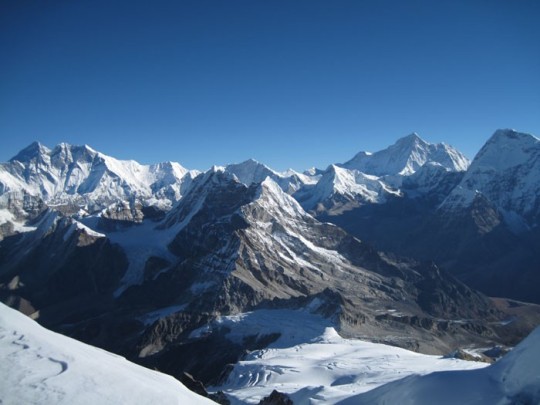
Recently, a group of intrepid climbers set their sights on Yala Peak, determined to add this iconic summit to their list of conquests. Their journey began with meticulous planning and thorough preparation, as they gathered their gear and mapped out their route. Each member of the team brought with them a wealth of experience and a burning passion for high-altitude adventure.
The expedition commenced with a trek through the breathtaking landscapes of the Langtang Valley, traversing lush forests and crossing roaring rivers. Despite the demanding conditions, the team pressed onward, fueled by their shared ambition and unwavering determination.
As they ascended higher into the thin air of the Himalayas, the magnitude of their challenge became increasingly apparent. Battling fatigue and altitude sickness, the climbers faced constant obstacles. Yet, they remained undeterred, drawing strength from their camaraderie and the sheer force of their determination.
Slowly but steadily, they made their way towards the summit, navigating steep ridges and icy slopes with caution and skill. With unwavering perseverance, they overcame obstacles that seemed insurmountable, pushing themselves beyond their limits in pursuit of their goal.
Finally, after days of relentless effort, they stood triumphant on the summit of Yala Peak, gazing out at the breathtaking panorama spread out before them. In that moment of triumph, the challenges they had faced along the way faded into insignificance, replaced by an overwhelming sense of achievement.
Their descent proved to be no less demanding than their ascent, as they carefully made their way back down the mountain, navigating treacherous terrain with caution and precision. But with each step downward, they drew nearer to safety, their spirits buoyed by the knowledge that they had conquered one of the Himalayas' most iconic peaks.
As they returned to base camp, weary but jubilant, the climbers reflected on their journey with a profound sense of pride and satisfaction. For them, Yala Peak had been more than just a mountain – it had been a test of their courage, resilience, and unwavering determination.
In the end, the Yala Peak climbing expedition stood as a testament to the indomitable human spirit and its capacity to overcome even the most daunting of challenges. As the team made their way back to civilization, they carried with them memories that would last a lifetime, along with a profound sense of accomplishment.
#Yala Peak#peakclimbing#Peak Climbing in Nepal#Yala Peak Climbing#himalayas#mountainviews#adventuretravel#nepal#mountaineering#outdooradventure#explorenepal
0 notes
Text
Everest Three High Passes Trekking: A Peak Adventure in Nepal
Nepal, the land of the majestic Himalayas, offers a myriad of trekking and climbing opportunities for adventure enthusiasts. Among the most challenging and rewarding experiences is the Everest Three High Passes Trekking, a journey that combines the thrill of high-altitude trekking with the breathtaking beauty of the Everest region. This trek, renowned for its difficulty and grandeur, is a bucket-list experience for seasoned trekkers seeking to push their limits.
The Everest Three High Passes Trekking takes adventurers across three daunting mountain passes: Kongma La (5,535m), Cho La (5,420m), and Renjo La (5,360m). Each pass presents unique challenges and vistas, including panoramic views of iconic peaks like Everest, Lhotse, Makalu, and Cho Oyu. The trek also encompasses visits to the famous Everest Base Camp and the spectacular Gokyo Lakes, making it a comprehensive journey through the heart of the Khumbu region.
For those looking to elevate their trekking experience, Peak climbing in Nepal offers a thrilling opportunity to conquer summits that test endurance and determination. Popular peaks like Island Peak, Lobuche East, and Mera Peak are often integrated into trekking routes, including the Everest Three High Passes trek. These climbs provide a perfect introduction to mountaineering, allowing climbers to stand atop snow-capped summits while basking in the grandeur of the Himalayas.
Another remarkable adventure in Nepal is the Manaslu Circuit Trekking, a hidden gem that offers solitude and cultural immersion. This trek encircles the eighth-highest peak in the world, Mount Manaslu (8,163m), traversing remote villages, lush valleys, and rugged terrain. Unlike the Everest region, the Manaslu Circuit is less crowded, providing a serene escape into Nepal’s pristine wilderness. The trek’s highlight is crossing the challenging Larkya La Pass (5,160m), which offers jaw-dropping views of Manaslu and surrounding peaks.
Whether you choose the adrenaline-pumping Everest Three High Passes Trekking, the exhilarating Peak Climbing in Nepal, or the culturally rich Manaslu Circuit Trekking, Nepal promises unforgettable memories and awe-inspiring landscapes. Each adventure offers a unique way to experience the Himalayas, cementing Nepal’s reputation as a haven for trekkers and climbers alike. Embrace the challenge and let Nepal’s unparalleled beauty redefine your sense of adventure.
0 notes